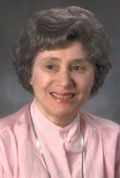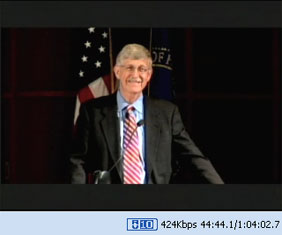Today marks the 1-year anniversary of our conversion of the NIGMS Feedback Loop from a thrice-yearly electronic newsletter into a blog. The year has passed quickly, but I think successfully.
Our inaugural post, Answering Your Recovery Act Questions, was the first of 16 entries related to the Recovery Act, and many of these led to extensive comments and replies. Throughout this extremely fast-paced period, the blog format served us all well: We provided you information in a timely fashion, and you helped us better understand what questions and concerns we needed to address.
The Feedback Loop has also covered many other topics. These are grouped into over 20 categories for easy browsing or searching. As of today, the site includes 86 posts by 28 NIGMS staff members.
During the last year, many people from the scientific community have told me how much they appreciate receiving information from us about NIGMS and NIH. The Feedback Loop is our major outlet for doing this, and we want make it as useful as possible to you and to us. Please don’t hesitate to comment on posts, e-mail me suggestions or other ideas or submit new post topics to the blog’s editor.


 Since I first wrote about the death of former NIGMS director Dr. Ruth Kirschstein, plans have progressed for a daylong commemorative event on Monday, May 17, at NIH. The program will include several remembrances as well as scientific presentations and posters by recipients of the Ruth L. Kirschstein National Research Service Award.
Since I first wrote about the death of former NIGMS director Dr. Ruth Kirschstein, plans have progressed for a daylong commemorative event on Monday, May 17, at NIH. The program will include several remembrances as well as scientific presentations and posters by recipients of the Ruth L. Kirschstein National Research Service Award. We were all very sad to learn of the death of Ruth Kirschstein, M.D., last evening. She will be deeply missed here at NIGMS, NIH, and beyond.
We were all very sad to learn of the death of Ruth Kirschstein, M.D., last evening. She will be deeply missed here at NIGMS, NIH, and beyond.